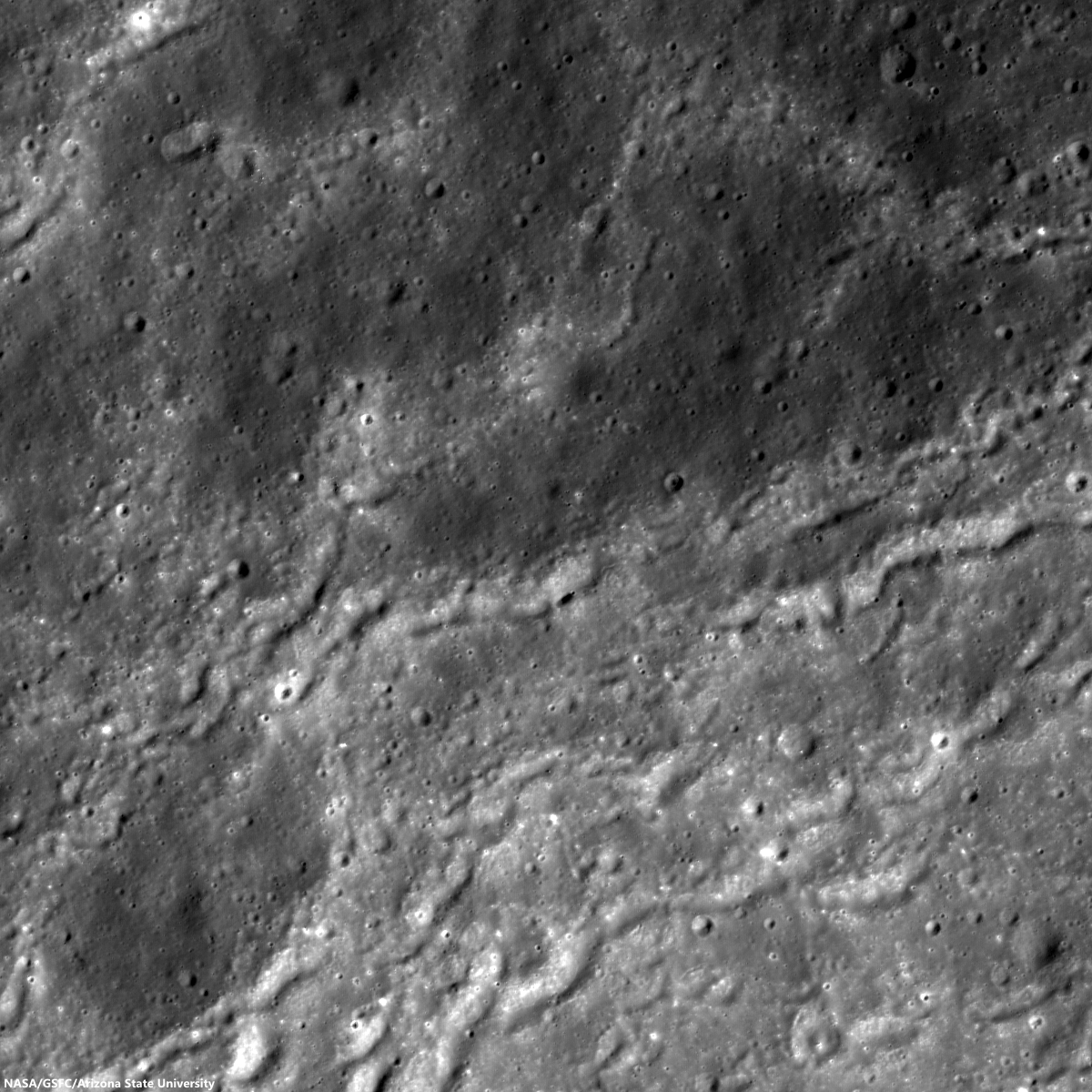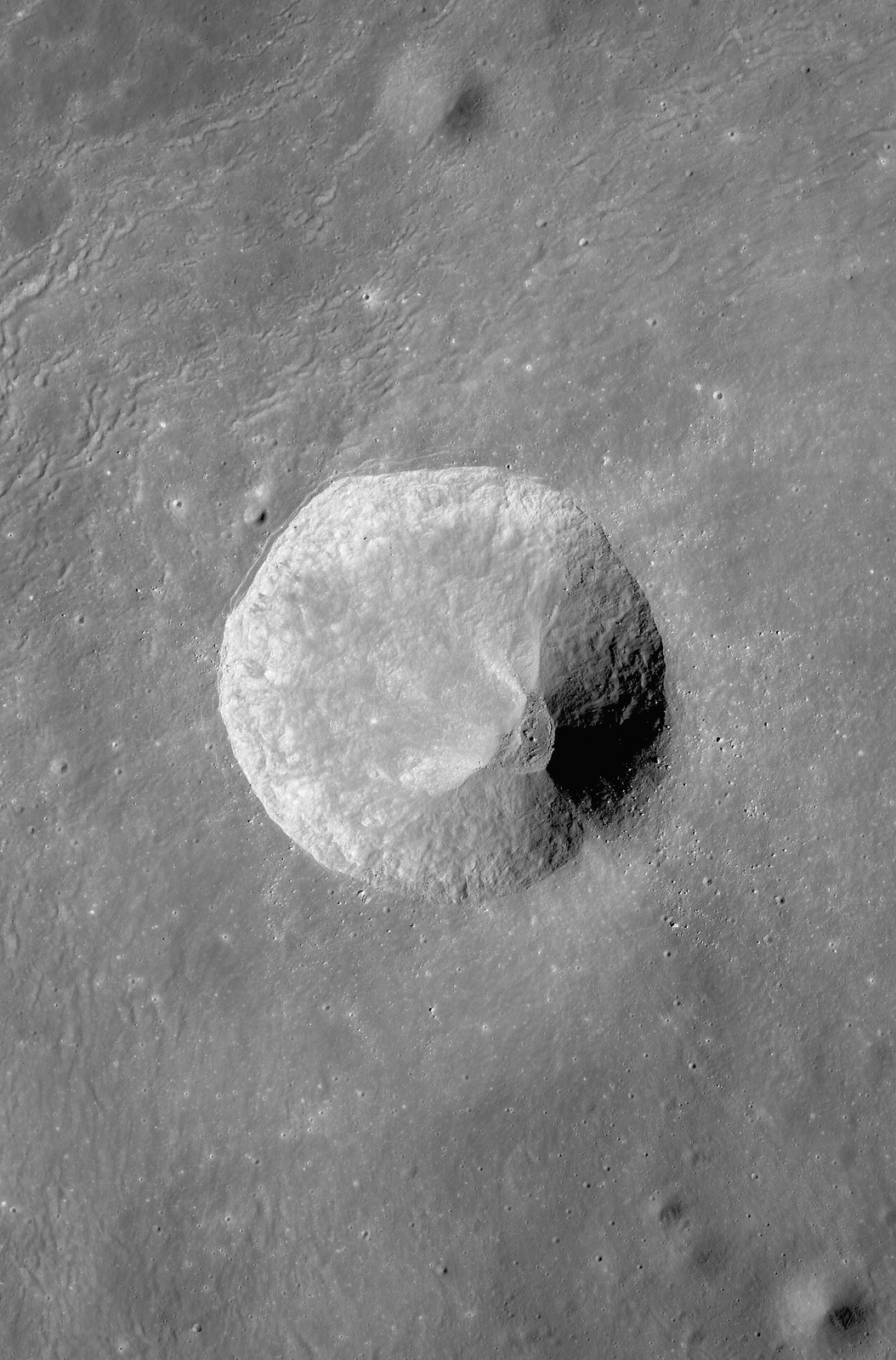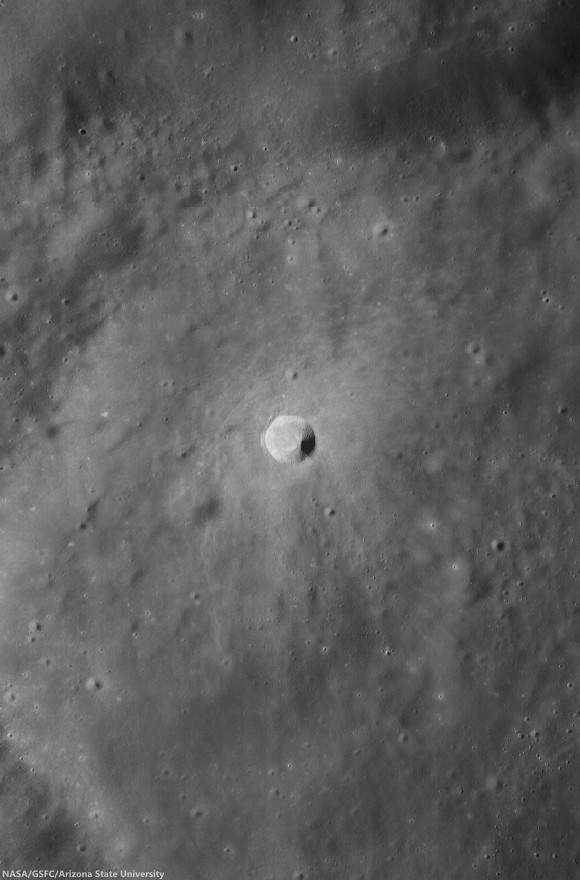 |
| Unnamed crater ejecta, within Dante C, field of view 1728 meters, centered on 28.463°N, 182.491°E, downslope is to the lower-right. From LROC NAC observation M1137707212L, LRO orbit 19746, October 29, 2013; angle of incidence 57.33° resolution 1.44 meters from 143.84 km [NASA/GSFC/Arizona State University]. |
Hiroyuki Sato
LROC News System
Dante C is a ~54 km diameter crater, located in the central farside highlands. In the northwestern portion of the crater floor, there is an unnamed crater (about 3 km in diameter) with a spectacular diffuse asymmetric ejecta pattern (see next WAC no-shadow context view, right side).
The uphill side (upper-left) shows a distinctive wavy pattern of ridges and grooves (seen in the opening picture) within about 3 km of the rim.
Probably due to the background slope (Dante C crater wall, downslope is to the lower-right), the ejecta hit the ground and stopped in a shorter distance than on the downhill side, leaving partially wrinkled edges in the ejecta deposits.
Explore the asymmetric ejecta with clear wave patterns in full NAC frame, HERE and in LROC QuickMap, HERE.
Related Posts:
Impact Art
Bright and Dark Ejecta
Dynamic Textures
Ejecta Patterns
Lassell D Ejecta
In the Wake of Giordano Bruno
Ground Hugging Ejecta
LROC News System
Dante C is a ~54 km diameter crater, located in the central farside highlands. In the northwestern portion of the crater floor, there is an unnamed crater (about 3 km in diameter) with a spectacular diffuse asymmetric ejecta pattern (see next WAC no-shadow context view, right side).
The uphill side (upper-left) shows a distinctive wavy pattern of ridges and grooves (seen in the opening picture) within about 3 km of the rim.
Probably due to the background slope (Dante C crater wall, downslope is to the lower-right), the ejecta hit the ground and stopped in a shorter distance than on the downhill side, leaving partially wrinkled edges in the ejecta deposits.
 |
| Wider, 6.14 km-wide field of view, context for area of interest at far upper center, left, from LROC NAC mosaic M1153033874RL, LRO orbit 21901, April 25, 2014; incidence angle 58.14° resolution 1.45 meters from 146.22 km over 29.17°N, 182.54°E [NASA/GSFC/Arizona State University]. |
 |
| Craters like Dante C disappear under low-angle sunlight. Fresh rays from much younger craters, like Jackson, and even a young crater on its northwest interior, outshine such a very ancient crater. View the full size 1000 px original gif file, HERE [NASA/GSFC/Arizona State University]. |
Related Posts:
Impact Art
Bright and Dark Ejecta
Dynamic Textures
Ejecta Patterns
Lassell D Ejecta
In the Wake of Giordano Bruno
Ground Hugging Ejecta





No comments:
Post a Comment